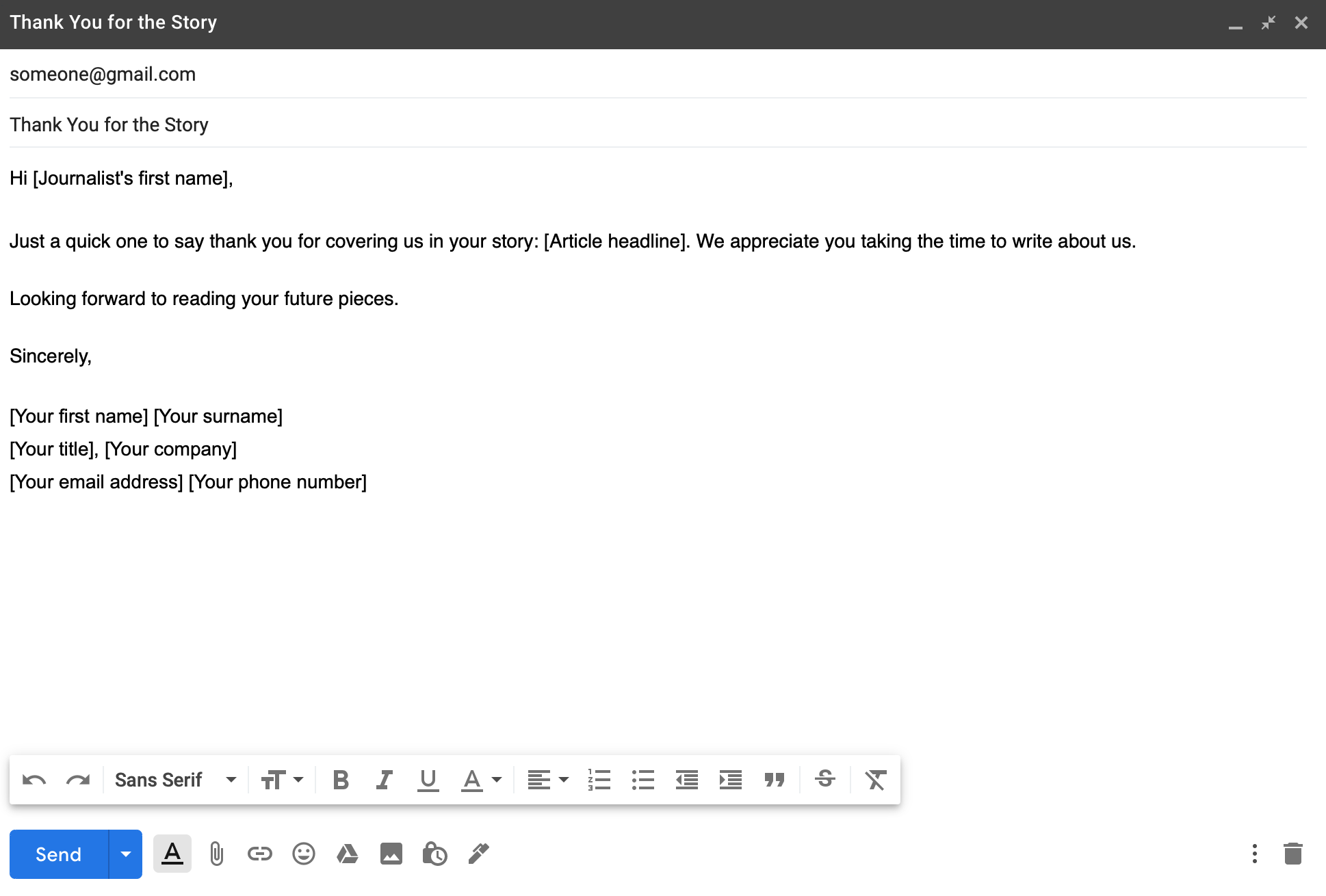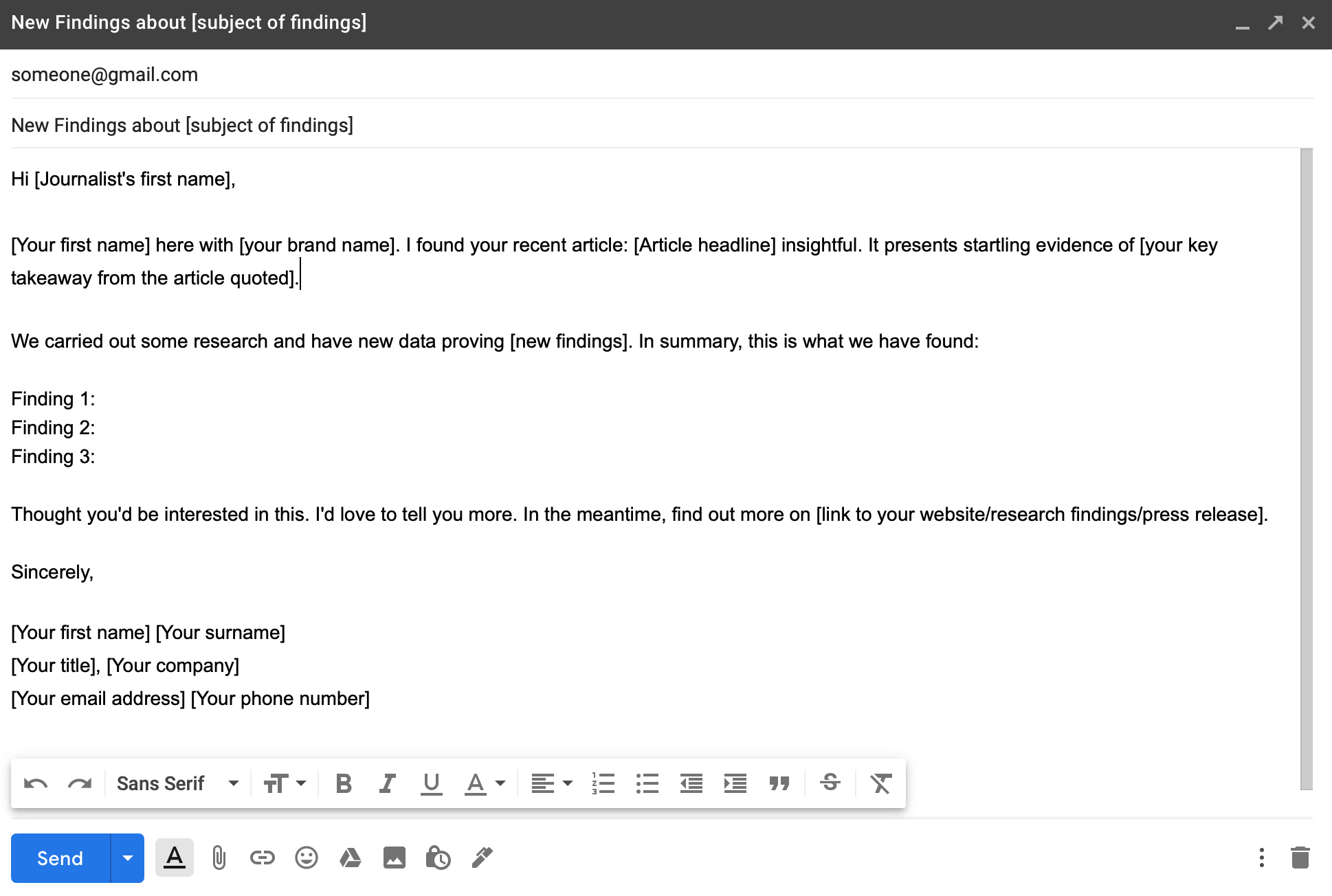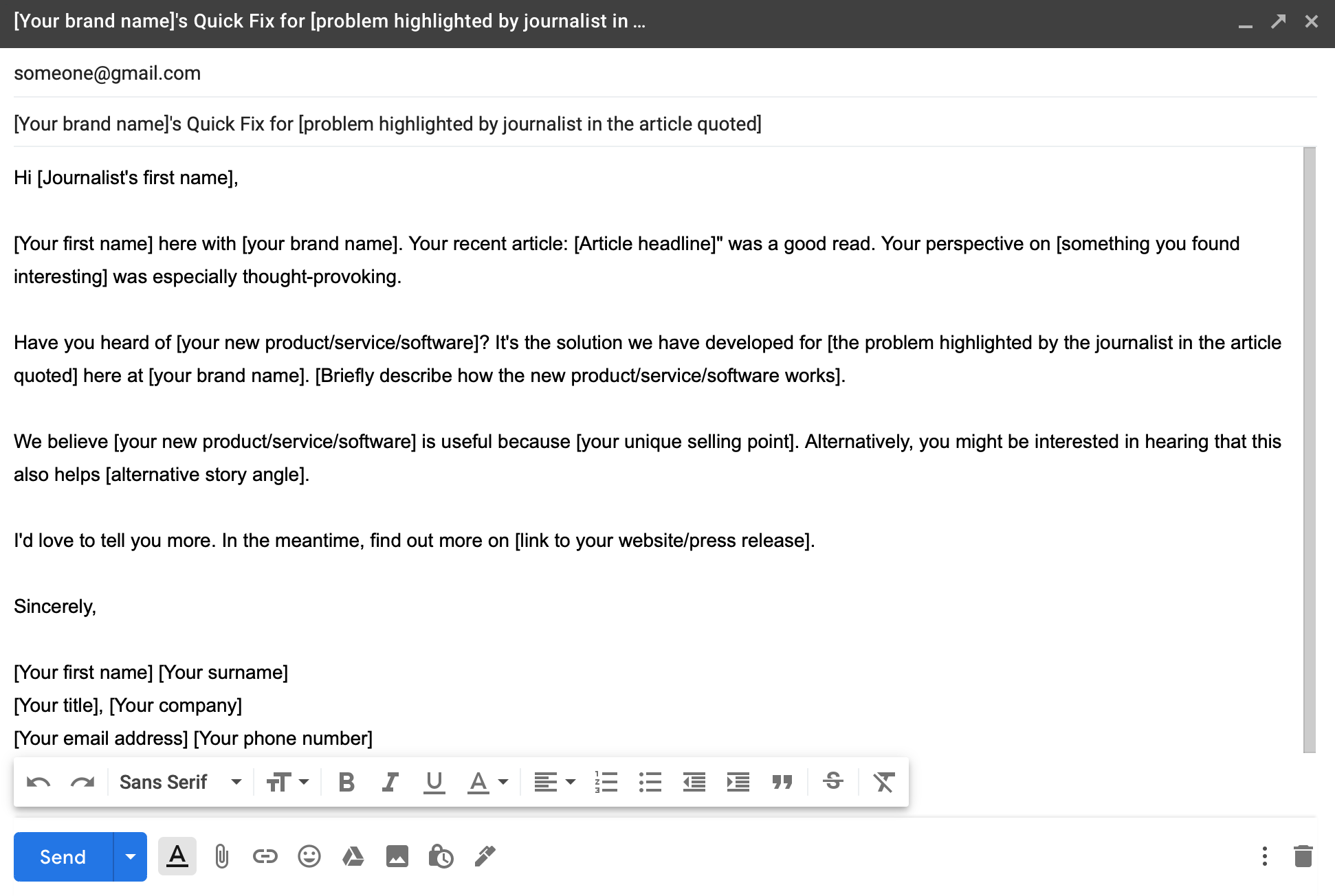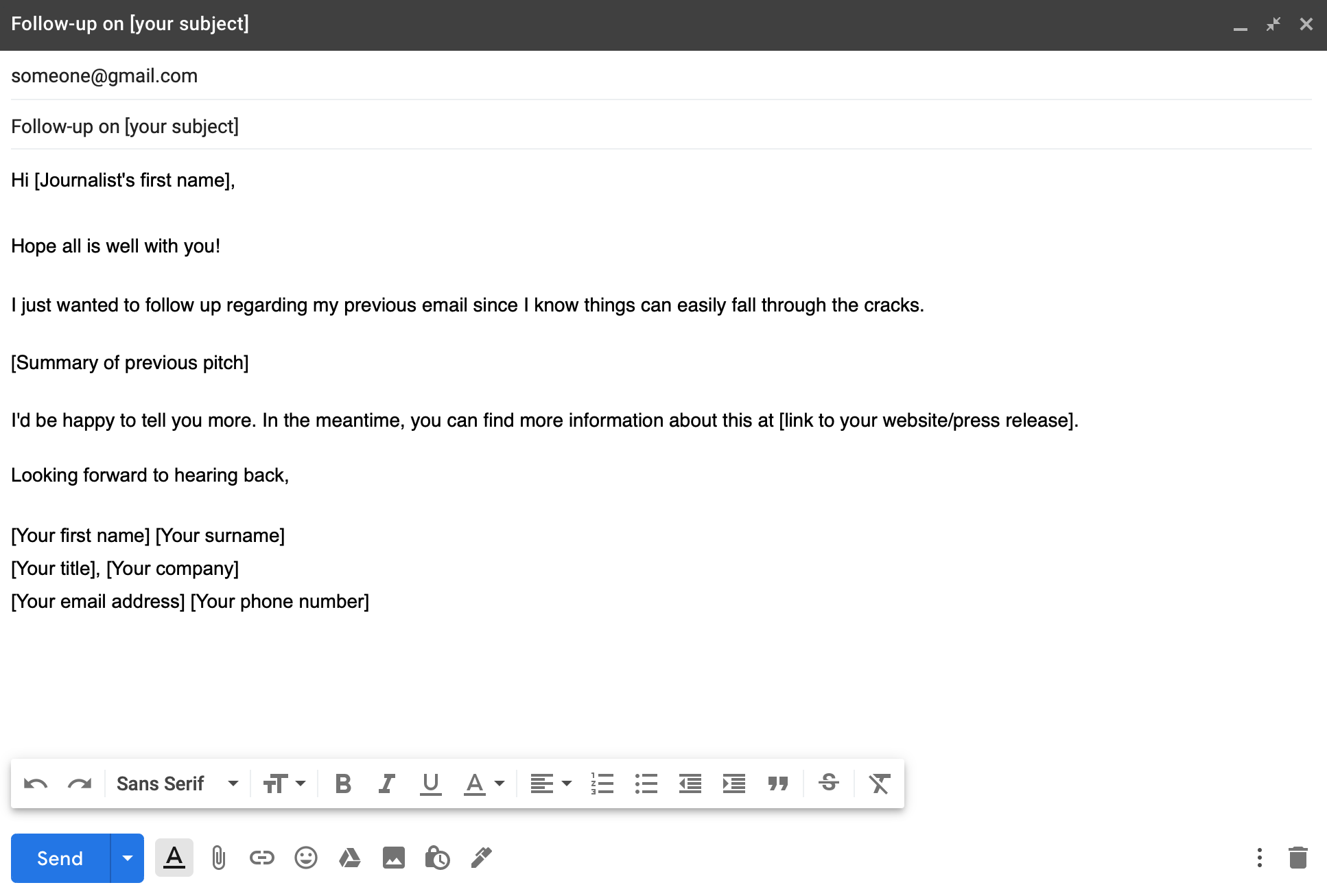Are you tired of spending hours crafting the perfect media pitch only to receive no response from journalists? We’ve all been there. But fear not, because in this article, we’re going to share the secrets to writing a media pitch that journalists will actually read.
Crafting a compelling media pitch is an art form. It requires a deep understanding of the journalist’s needs and a strategic approach to grab their attention. In today’s fast-paced media landscape, journalists are bombarded with countless pitches every day. So how do you make yours stand out?
Let’s briefly go through what you need to keep in mind, shall we?
First, it’s important to tailor your pitch to each journalist’s beat and interests. Generic, mass-distributed pitches rarely make the cut. Instead, personalize your message and demonstrate that you’ve done your research. Second, keep it short and concise. Journalists don’t have time for lengthy emails or verbose explanations. Get to the point quickly and clearly articulate why your story is newsworthy. Lastly, make your pitch visually appealing. Incorporate multimedia elements such as images, infographics, or videos to pique the journalist’s interest.
By following these tips, you’ll increase your chances of getting your media pitch read and, ultimately, landing valuable coverage. So let’s dive into these points in detail and learn how to write a media pitch that journalists can’t ignore.
Let’s begin by discussing what a media pitch is.
What is a media pitch?
A media pitch is a message you send to people in the media summarizing the story you want to share and explaining why it’s relevant. You send a pitch to convince the recipient that your story is valuable and worth telling. Ultimately, a media pitch is an effective way to secure earned media for your brand.
Traditionally, you would send a pitch via email to a journalist or the editor of a newspaper, magazine, or television station. However, in the recent past, the landscape of media influencers has expanded to include bloggers and vloggers. Therefore, it’s important to consider how these people could help you tell your story.
How not to pitch:
-
DON’T use clickbait in your subject line
Using clickbait in your headline might seem like a good idea but it is in poor taste and can even damage your reputation. If a journalist thinks your subject line is misleading or overhyped, they are unlikely to even open the email. Moreover, once you’ve sent a few emails to the same journalist, your brand gets associated with your subject lines. The last thing you want is for a journalist to associate your brand with clickbait.
-
DON’T ramble
Journalists want your pitches to be short and concise. Keep in mind that 58% of journalists prefer your pitch to be 200 words long at most.
-
DON’T piggyback off a previous article
It’s a great idea to express your appreciation for previous work the journalist has done. Nevertheless, a journalist will be disappointed if you say, “I enjoyed your article about X and my brand does the same thing.” Journalists are always trying to break new stories. They don’t want to write about the same thing twice.
Instead of suggesting that they write a similar story, you can suggest a follow-up story. Maybe you have a new angle to offer on a topic the journalist has written about before. Alternatively, you could offer new research on the same subject.
-
DON’T include your press release as an attachment
People are wary of opening attachments from unknown sources. Moreover, opening an attachment is one more task to do. You don’t want to discourage a journalist by giving them extra work. On the contrary, you want to make their lives easier.
-
DON’T just copy-paste your press release
Given that the whole point of sending a media pitch is to summarize your news, simply copy-pasting your press release into the email would turn a reader off. Instead of doing that, let your contact choose whether they want to read the press release.
Start by offering a brief summary of your story. Then you can either paste the press release in a separate section at the bottom, or you can include a link to your press release.
-
DON’T leave your pitch open-ended
What do you want the recipient to do after reading your pitch? It is important to outline this clearly. Do you want the media contact to write a story about you? Offer to give them more details about the story. Do you want them to interview your CEO? Offer them an exclusive interview with the CEO.
In either case, make sure you have a call to action – your request for the journalist. It’s also important to highlight why you think this story would be of value to the recipient. Finally, include your contact details so it’s easy for the journalist to reach you.
-
DON’T Plagiarize / Be Un-Original
When submitting a pitch journalists are experienced at identifying if content has been plagiarized or AI generated. They are using tools like Originality.AI that can identify if content has been copied from somewhere else on the web or if it was an AI generated response. Journalists want to share Original content and so make sure you are not un-original.
-
DON’T be pushy
If you don’t hear back from someone, it’s helpful to follow up. Sometimes people get busy and miss emails. Even so, don’t send more than 2 follow-up emails to each person. Anything beyond 3 emails about the same thing is considered pushy and will put you in a journalist’s bad book.
How to pitch:
-
DO find a newsworthy story
Before you start pitching ask yourself if your story is valuable to the person you’re talking to. Acquiring new offices for your staff might be big news within your company. Nevertheless, you might be surprised to find that this news is not as exciting for a media influencer as it is for you.
One of the best ways to capture attention is by pitching a newsworthy story. This is a story that is relevant, timely and will appeal to the media influencer’s audience.
-
DO find the right media contacts
Pitching your story to a random group of contacts is like throwing it against the wall to see if it sticks. If you send your pitch to a specific kind of media influencer, then you will increase your chances of success.
Instead of pitching to a mass audience, select contacts who write stories specifically about your industry. Agencies like Pressfarm can build curated media lists to help you connect with the best journalists in your niche. In addition to this, Pressfarm is skilled at creating the kind of quality content that will encourage these journalists to take you seriously. With a winning press release, a few engaging guest posts, and a modern, eye-catching media kit, you can make a splash with your brand.
-
DO build a relationship
Journalists will be more inclined to help you if they believe they’re not just a means to an end. How do you convince a journalist that you value them as a person? By building a long-term relationship with them.
If you engage with a journalist over a long period of time, then your name will soon become familiar to them. Follow your contacts on social media and engage with the content they share there. Tell them about a recent story they wrote – one that you enjoyed. Reach out when you don’t need help so that you can build trust with your contacts beforehand.
-
DO categorize your contacts
Once you have your list of media contacts, categorize them so it’s easy to contact them in the future. You can categorize them by the industry they cover (their beat). Furthermore, you can make notes on specific details such as which journalist prefers humor and which one prefers sticking to the facts.
-
DO offer data and research where possible
New research data is appealing to people in the media since they’re always looking for something new to talk about. If you can offer new information, then you’ll have a higher chance of getting coverage.
-
DO offer more than one story angle
In the event that your first story angle doesn’t spark the recipient’s interest, offer one or two more angles. In doing so, you will help the person you’re contacting see the possibilities. You can make their work easier by suggesting story angles that hadn’t occurred to them.
-
DO craft custom pitches
Taking time to write a personalized pitch to each contact will increase your chances of securing coverage. We’ve already talked about addressing your media contacts by name. You can take this a step further by referring to something they’ve already written or a post they shared on social media.
Taking time to build a relationship with journalists outside the time when you need them to write a story helps. The more you understand the person you’re writing to, the more you will know how to write to get their attention.
-
DO include visual content
65% of journalists appreciate visual content in pitches. With this in mind, try to illustrate your concepts with visuals such as infographics and graphs. Some of the best PR experts have also been known to use videos in their pitches. If you need to add audio to video, there are plenty of tools that you can use.
-
DO show your admiration for previous work
If you mention the fact that you enjoyed previous work that the person you’re addressing has done, they are more likely to be open.
-
DO have a catchy subject line
As previously stated, you shouldn’t use clickbait. Even so, it’s still important to have an interesting headline that sparks curiosity in the reader. The ideal subject line is 6 to 10 words long.
It’s also useful to include one or two keywords associated with the journalist’s beat. This way, they will see the value of your story before they even open the email.
-
DO respond promptly to requests
Journalists are always chasing deadlines. For this reason, if a journalist reaches out for more information, you should respond as soon as you can. Taking too long to reply can discourage a journalist who was considering writing a story about you.
-
DO thank your journalist
In case a journalist writes about you, remember to thank them. In addition to that, once they have published their story about you, share it. Later on, you can continue to be a valuable source of information by sharing useful tips unrelated to your brand. This will go a long way towards maintaining the relationship you have built.
How should you structure your media pitch?
A traditional media pitch has six key sections which you should pay attention to:
- Subject line
- Introduction
- Lead
- Value proposition
- Call to action
- Conclusion
How do you use these sections to write an effective email pitch? We’ve highlighted this in the guide below:
Some Media Pitch Examples:
You will send two types of pitches during the lifetime of your brand:
- Relationship-building pitches
- Pitches requesting media coverage
Now that we have covered the requirements of a good media pitch, let’s put these concepts to practice by going over some examples of pitches in both categories.
-
Relationship-building pitches
As previously stated, building relationships with the people you are pitching before you start asking for favors is important. Therefore, some of your pitches will be solely for this purpose.
Example 1: The “Appreciate your Insight” Pitch
Notice how this email not only expresses appreciation for the journalist’s perspective but also initiates a conversation about something the journalist cares about. This paves the way for a back-and-forth with the journalist. Eventually, you will have a good opening to pitch your brand when the opportunity presents itself.
Example 2: The “Typo in your Article” Pitch
This pitch is especially useful because you’re offering the journalist help before you ask for help. They are likely to return the favor in the future.
Example 3: The “Thank you for the Story” Pitch
Notice how brief this email is. While it’s useful to thank journalists when they write a story about you, you shouldn’t go overboard. A “thank you” that is too profuse can create feelings of awkwardness. In addition, gushing your thanks would make the journalist feel like they did you a huge favor. From their perspective, they were simply reporting on a newsworthy story.
-
Pitches requesting media coverage
Once you have established a relationship with a journalist, you can ask them if they are interested in writing about you. Let’s look at some examples of how this would work:
Example 4: The “New Findings” Pitch
This pitch accomplishes one of the previous requirements of pitching: DO offer data and research where possible.
Example 5: The “We have an Innovative Solution” Pitch
You can suggest a follow-up to a story previously published by telling a journalist about your “innovative solution” to a problem they care about. Take note of how the word “innovative” isn’t actually used in the subject line. This is one of the buzzwords you should avoid in your pitches.
Example 6: The “Follow-up” Pitch
Since you had already sent a previous email, your follow-up should be brief and to the point.
Over to you:
Writing pitches that spark curiosity and inspire action isn’t hard once you know what to look out for. Keep these tips in mind and you’ll be generating publicity for your brand in no time.
Feel free to share the infographic below with your networks:
How Pressfarm can help
For an entrepreneur, the brand image you build can determine your success or failure. At Pressfarm, we help companies define the right narrative in the media for their brand – either to improve their credibility or resolve a PR crisis. If you are an entrepreneur wondering how to improve your company’s publicity, get in touch with us. We can help you to craft and distribute your press releases, develop compelling guest posts and design eye-catching media kits for your brand.
Learn why we are good at what we do from our customer success stories.

![How to Write a Media Pitch Journalists will Read [6 Examples]](https://press.farm/wp-content/uploads/2023/08/how-to-write-a-media-pitch-1080x675.png)






